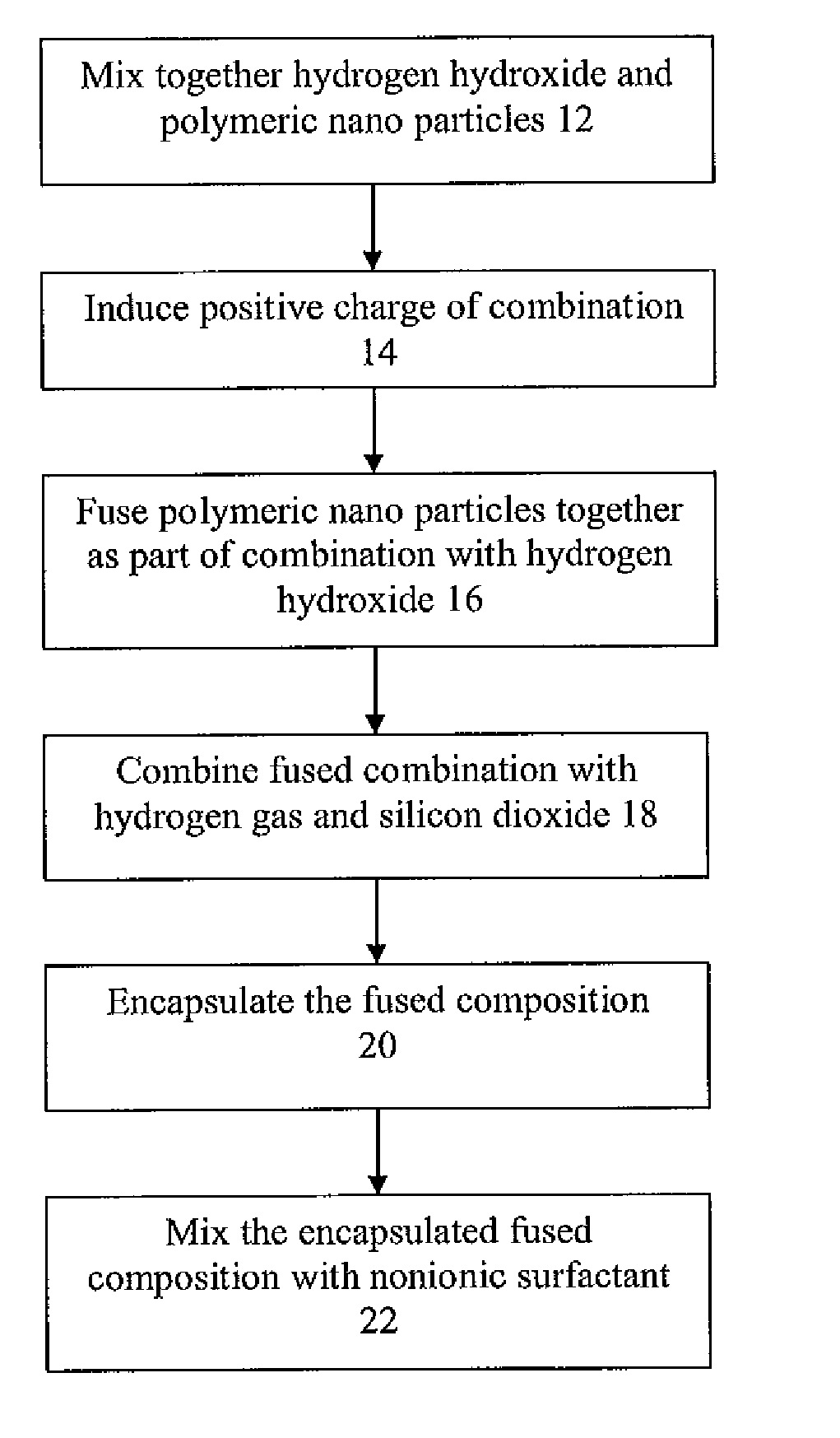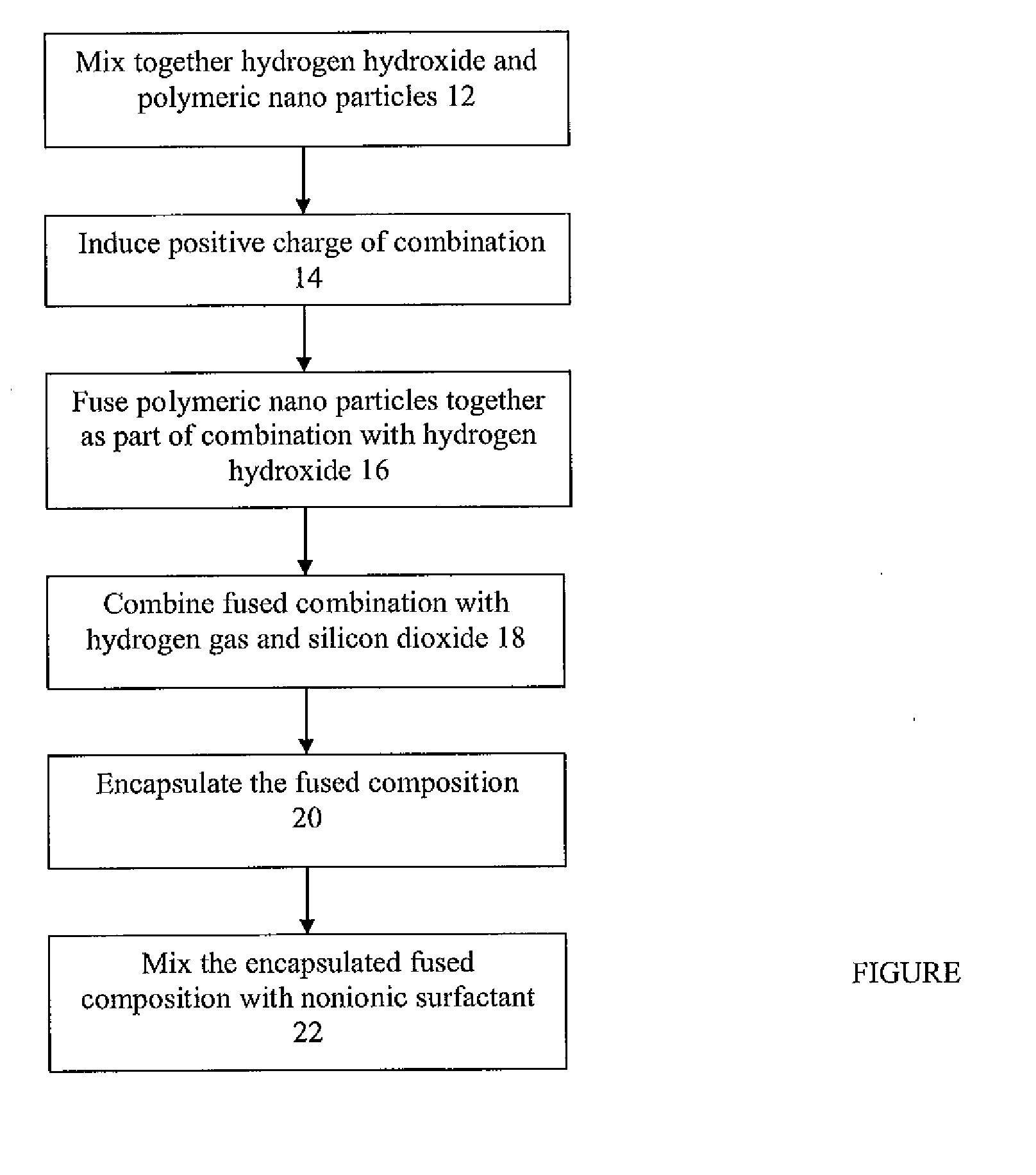Fusion bonded nonionic surface finish and method for making same
a non-ionic surface finish and fusion bonding technology, applied in the field of polymer-based surface finishing systems, can solve the problems of high-solids coatings, limited use of fluoro-containing polymers, and difficult adhesion to many common surfaces, etc., to achieve cost-effective, surface enhancement, and easy application
- Summary
- Abstract
- Description
- Claims
- Application Information
AI Technical Summary
Benefits of technology
Problems solved by technology
Method used
Image
Examples
Embodiment Construction
[0024]A water borne nonionic ultraviolet protected nano polymer particle fusion surface finish of the present invention is made by a process 10 represented in the FIGURE. First, in step 12, hydrogen hydroxide and nanometer size polymeric particles are mixed together using a conventional high shear, high speed mixer, such as Charles Ross and Son Batch High Shear mixer or similar. The polymeric particles added to the mixer are in powder form and may be fabricated of polymers known generally to those of skill in the art. It is to be noted that one or more polymer types may be used in the finish dependent upon the specific application. For example, a single polymeric particle may be employed when the finish is to be used as a surface protectant, such as a car surface finish. In another example, two or more different polymeric particle types may be employed when the finish is to be used to establish low surface friction and high ultraviolet resistance, such as a treatment for the wing of...
PUM
| Property | Measurement | Unit |
|---|---|---|
| temperature | aaaaa | aaaaa |
| weight ratio | aaaaa | aaaaa |
| dimension | aaaaa | aaaaa |
Abstract
Description
Claims
Application Information
 Login to View More
Login to View More - R&D
- Intellectual Property
- Life Sciences
- Materials
- Tech Scout
- Unparalleled Data Quality
- Higher Quality Content
- 60% Fewer Hallucinations
Browse by: Latest US Patents, China's latest patents, Technical Efficacy Thesaurus, Application Domain, Technology Topic, Popular Technical Reports.
© 2025 PatSnap. All rights reserved.Legal|Privacy policy|Modern Slavery Act Transparency Statement|Sitemap|About US| Contact US: help@patsnap.com


